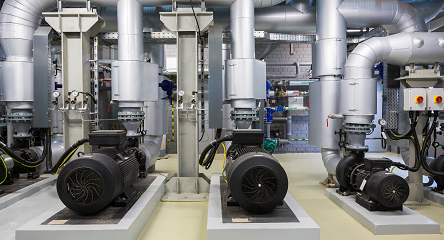We are often asked about the typical cost of TPM implementation. My experiences at implementing TPM since 1987 and in particular as a consultant to hundreds of plants since 1991 has shown that an expected start-up cost can be about 10-20% increase in training and about 15 % increase in maintenance costs for the first two years if a 10% plant coverage is attained by year one (20% by year two). This investment goes down significantly if only a couple of machine centers or units are piloted. In fact, if the desire is slow integration the first year (1-3 pilots only), maintenance costs and training costs may be slight and can often be covered with only slight budget overruns.
One of the ways to calculate this is the impact of taking critical equipment (could be 25-30% of the process) to 85-90% Overall Equipment Effectiveness (OEE)–The Availability Rate X The Performance Rate X The Quality Rate. It is not beneficial to calculate OEE for an entire facility but for key processes or equipment (bottle neck or critical). Closing the gap between a current level of 55% to the desired 85-90% can be calculated as additional capacity. It may not be in the best interest to focus TPM on all plant equipment because the returns may not be there (cost to implement TPM could be greater than the returns from improvement.) Do you want to rebuild the engine and paint the body of that 1977 Ford Pinto?
You need to convert the OEE to dollars (pesos, yen, marks, etc.). One way is to take your existing OEE and break it into the three category of losses and show the gap between current and target. For example, say you have current OEE-Availability at 60% and you know that the target is 90% (95% if you have a continuous process). You calculate the units you could run if you had the extra 30% available (difference between 90% and 60%). This is, of course, assuming it is capacity constrained, in other words, you could sell that extra 30% capacity. If not, you have to start factoring (gets messy-but doable). We also have calculate the increased volume from reducing the top five-ten minor stoppages on specific equipment (if your equipment is impacted by jams, hang-ups, and short stoppages). This can be significant if you have multiple lines with the same stoppages (chronic issues).
You go through the speed or Performance losses as well as the Quality losses to estimate “How many more units could I produce” if I were at 95% Performance (Designed Speed) and 99% Quality. This is best done by equipment–not by plant. However, you could get real refined and show the estimated cost of quality if you are showing quality-related losses. What does how rework, scrap, returns, lost opportunity cost us.
Look at your constraints or bottlenecks to calculate the value of removing those constraints. If you could run another 10,000 units per week and each could generate one dollar of revenue, you would net an additional 10,000-dollar for that week. Your per unit cost would be reduced which could allow you to lower your price and sell more units using the extra capacity you gained from improving OEE.
Another way is to forgo capital investment. Let’s say you could, with TPM, extend the life cycle by three years for all 14 widget makers. The capital replacement per widget maker is 30,000 dollars. You can calculate the total cost of capital (actual +interest+lost opportunity) for that 30,000 dollar widget maker and show the savings of capital investment avoidance for those three years for all 14 widget makers. If I can get more out of my existing assets, my return per asset has increased. My costs to service capital has decreased.
We also use Mean Time Between Failure (MTBF) as a savings point to show
reduced costs from increasing the time between failures. This is very
equipment and component specific but another way to calculate the benefits.
There are many other cost saving opportunities (life cycle cost reduction, unplanned maintenance loss, reduced staffing cost by eliminating the need for a third shift, etc.).
The major variables are the current condition of your equipment (how well maintained it is), your people (how skilled and knowledgeable they are) and the persistence your leadership will take in making this work. History has shown that about 25% of the companies who start TPM will have major successes. Another 25% will have fairly good successes but because of competition from other programs, lack of constancy of effort and the lack of persistent leadership will only make it a modest success and may linger or decline after a few years of effort. The other 50% will fail in the first 18 to 24 months.
It is hard to calculate the value from improved morale, better relationships between maintenance and operations, management and hourly as well as the feeling of pride and sense of accomplishment from making the equipment and work areas look better and run better. But this does have value.
Return on Investment can be calculated over a five year period with an
expected reduction in maintenance costs of 25-30% and conversion costs
(manufacturing costs) 20-25%. Returns the first year are low (investment year), if any, but begin to increase years two-five. We have many documented case studies validating these returns. I hope this helps a little.
To view more please visit Marshall Institute





